(
Note - this is an article I wrote recently for Autoshite.com, I have simply 'cut and pasted' the entire thing in here including picture links. If you are having trouble seeing the photos please let me know and I will repost them in the conventional manner - S.B)
 Ramses brochure, c.1966The Ramses, Egypt's first car
Ramses brochure, c.1966The Ramses, Egypt's first carTo describe the Egyptian car industry without making a lighthearted reference to Egypt's more traditional form of mass transportation is nearly impossible. However you try to avoid the tired stereotypes of wandering Arabs traversing the deserts on camels, you can't help but accept the fact that what the Egyptian population needed from a family car in the 1950s assumed many of the characteristics of that faithful beast, namely reliability, ruggedness, strength and great fuel consumption. Comfort for the occupants would follow tradition and be low on the list of priorities.
It was with these criteria in mind that Captain Raymond Flower,the English owner of the Cairo Motor Co Ltd, the Egyptian Morris agents, approached new President Gamal Abdel Nasser with the view to building a small affordable peoples car.
Nasser had taken power in 1956 and quickly started a campaign of modernisation in Egypt, in which Flower hoped to play a major role. He had previously attempted to kickstart a motor industry in Egypt with a Lister-based sportscar called the Phoenix 2SR6, which he planned to race at Reims under the auspices of an offical Egyptian racing team. The project fell flat, but not before Flower had presented another, more powerful racer called the SR150 that never made it beyond the mock-up stage.
What Flower hadn't counted on was the strong anti-colonial sentiments of the new president, and in 1956 Nasser nationalised the Suez canal, and the English population mostly fled to escape the tension on the streets of Cairo. Flower, along with his brothers, returned to England and set to work producing the car with backing from Henry Meadows, and it became the Meadows-Frisky. The very same events that led to Flower abandoning his dream of an Egyptian people's car were also the cause of the Frisky's success in the UK, as demand for small economy cars rocketed in the wake of the Suez crisis.
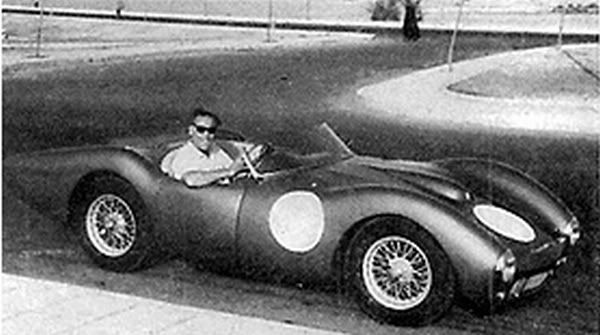 Captain Flower sits in the Phoenix 2SR6 prototype, 1955
Captain Flower sits in the Phoenix 2SR6 prototype, 1955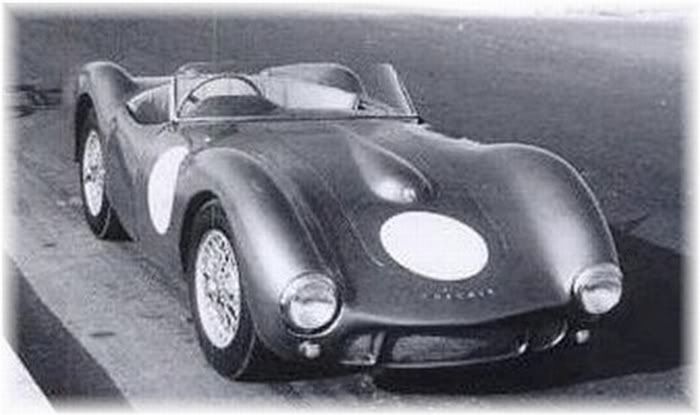 Car was attractive, but underpowered, using a Triumph engine
Car was attractive, but underpowered, using a Triumph engine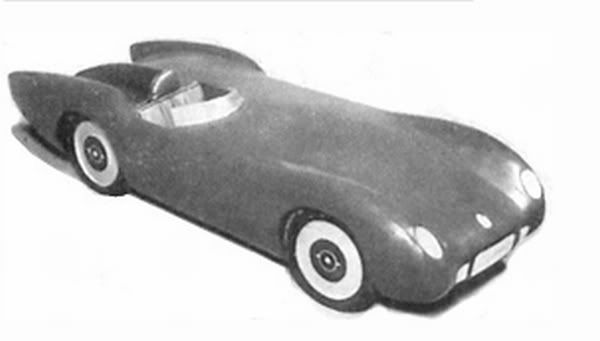 Pheonix SR150 was to use a 1.5 litre engine and race at Le Mans, but never made it beyond this mock-up
Pheonix SR150 was to use a 1.5 litre engine and race at Le Mans, but never made it beyond this mock-upIn Egypt, the project to build an Egyptian peoples car had begun in earnest without Meadows, but adhering strongly to his specifications. The car was christened 'Ramses' and some early prototypes were built that looked almost identical to the English Frisky. Unfortunately, the Egyptians had neither the technical know-how or manufacturing capacity to productionise the car, and the project stalled.
Around 1959, German car and motorcycle manufacturer NSU agreed to a joint German-Egyptian venture to produce a car, using the basic mechanical design of it's popular Prinz model, and in 1960 the Egyptian Light Transport Manufacturing Company set up a factory beside the Giza pyramids and set about building the first ever car designed and built in an Arab nation.
The result was the Ramses Ultilica, an open jeep-like vehicle similar in style to the Mini Moke or Citroen Mehari. Ground clearance was negligible and 2WD can't have helped it's success in the sand dunes. The rather severe styling, made up entirely of straight lines and jutting angles, was a product of the nascent industrial climate, as the factory lacked all but the most basic presses and tools. The car was totally hand assembled and production trickled along for a couple of years, with only a handful produced each day.
 Early Ramses prototype on the streets of Cairo
Early Ramses prototype on the streets of Cairo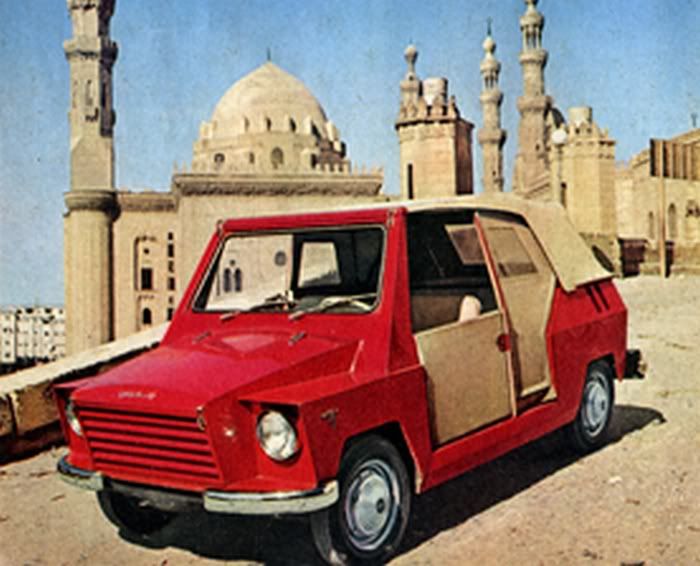
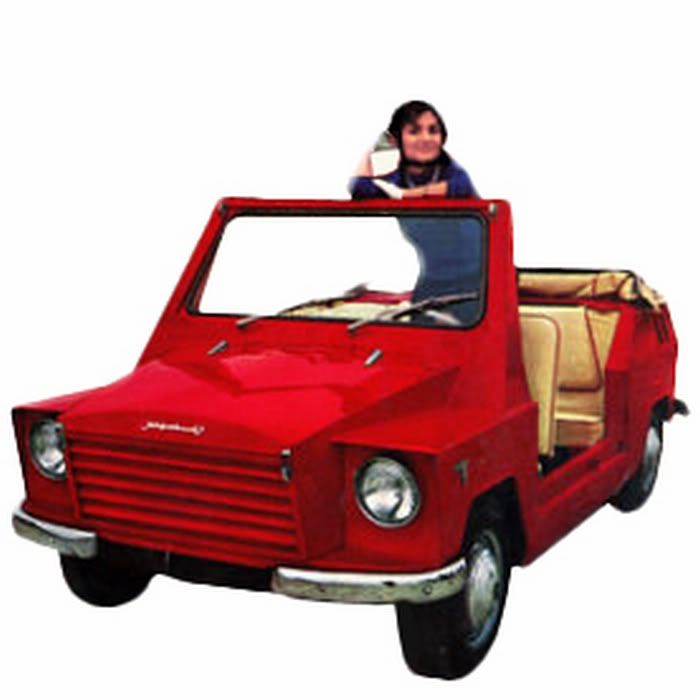 Utilica brochure showing the crude sidescreens and hood arrangement
Utilica brochure showing the crude sidescreens and hood arrangement The Ramses factory, handbuilding Utilicas was a labour-intensive process
The Ramses factory, handbuilding Utilicas was a labour-intensive processDespite the mini-Jeep looks, the Utilica was far from a practical family car either in the desert or the cities of Egypt, and in 1963 a new model was launched, borrowing even more from the Prinz, even retaining it's shrunken Corvair looks, but with a pointless and very ugly dummy grille at the front. The car was a much bigger success than the utilica, but demand was still small and only about 300 were built in 2 years. Motive power came from a rear-mounted 600cc engine producing a whopping 36hp. Monocoque construction, IFS and a curb weight of just 680kg made the car a practical choice for the unpaved roads or Egypt.
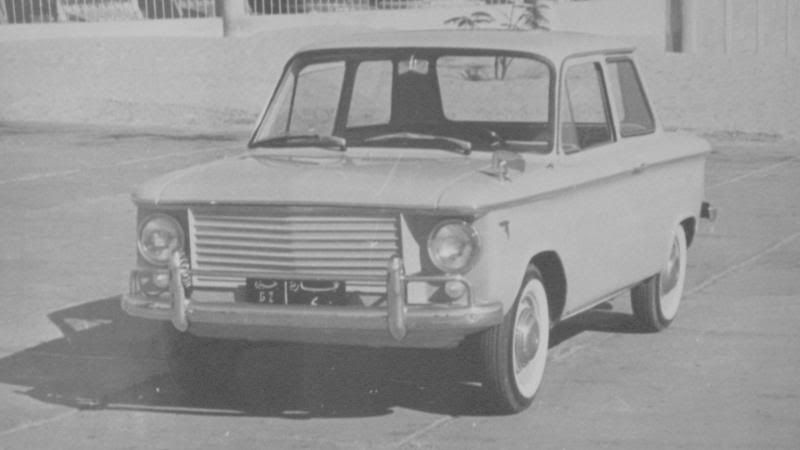 The First incarnation of the Ramses saloon
The First incarnation of the Ramses saloonThe standard saloon was joined by a strange pick-up variation, the practicality of which must have been severely limited by the rear engine, and a small convertible called the Gamila. This was designed by Michelotti whilst working at Vignale, and when viewed from the rear it could almost be a chic Italian Fiat-based car, but at the front the dummy grille of the saloon grew even more ridiculous and any semblance of style was lost.
One wonders if this styling quirk was forced on Michelotti by the factory, as it's hard to see how he could've been happy with the finished result.
Unsurprisingly, the Gamila only made up a small handful of total Ramses sales. At a time when few people could afford even a basic car, it's no surprise even fewer were prepared to pay even more for this odd contraption that lacked all of the practical qualities of the standard saloon.

 Vignale's Gamila was hardly a beauty
Vignale's Gamila was hardly a beauty1965 saw the Ramses given a minor restyle, with the grille now less intrusive and looking even more like it's German cousin, but the major change came one year later when Egyptian designer Abdel Wahed completely restyled the car, going some way to disguise it's origins but bizarrely now looking like the Russian ZAZ, which of course was also based on the NSU design.
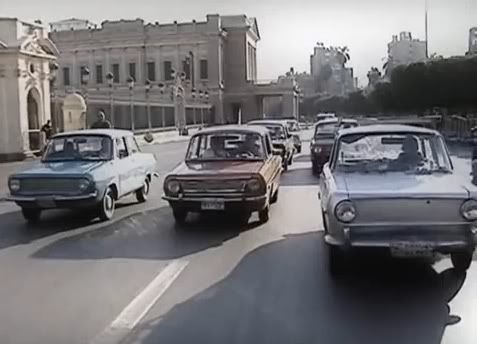 The final version of the Ramses, seen together in modern-day Cairo
The final version of the Ramses, seen together in modern-day CairoDespite the new bodywork, demand for the Ramses was falling fast and the car sold less each year. The plug was finally pulled in 1969, total production for all Ramses was probably less than 1500 units.
Somewhere along the line, the Ramses name was revived and a mysterious 4 door prototype was shown to the press in 1972. Exhibiting a modern, clean design and apparently front-engined, for unknown reasons the car never made it to production and this details about the project are now almost nonexistent.
Whatever the reason the Ramses name never reappeared, it's fate was sealed in 1973 when the factory was taken over by a company assembling CKD Fiats, which became instantly popular along with other foreign-designed, locally built cars.
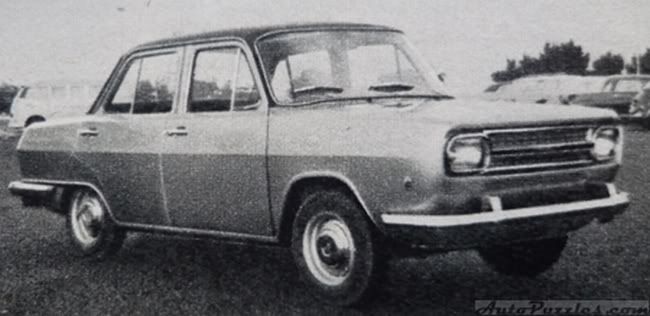 The abortive 'big' Ramses prototype had Opel and Moskvitch overtones
The abortive 'big' Ramses prototype had Opel and Moskvitch overtonesToday the Ramses is almost unknown outside of it's homeland, and derided within. A small band of hardy enthusiasts still run Ramses cars but Egypt is a long way from having a classic car scene, and it seems inevitable that the few remaining cars will expire long before the general public can appreciate the importance of the strange little car, that really did have all the best attributes of that 'other' Egyptian form of transport